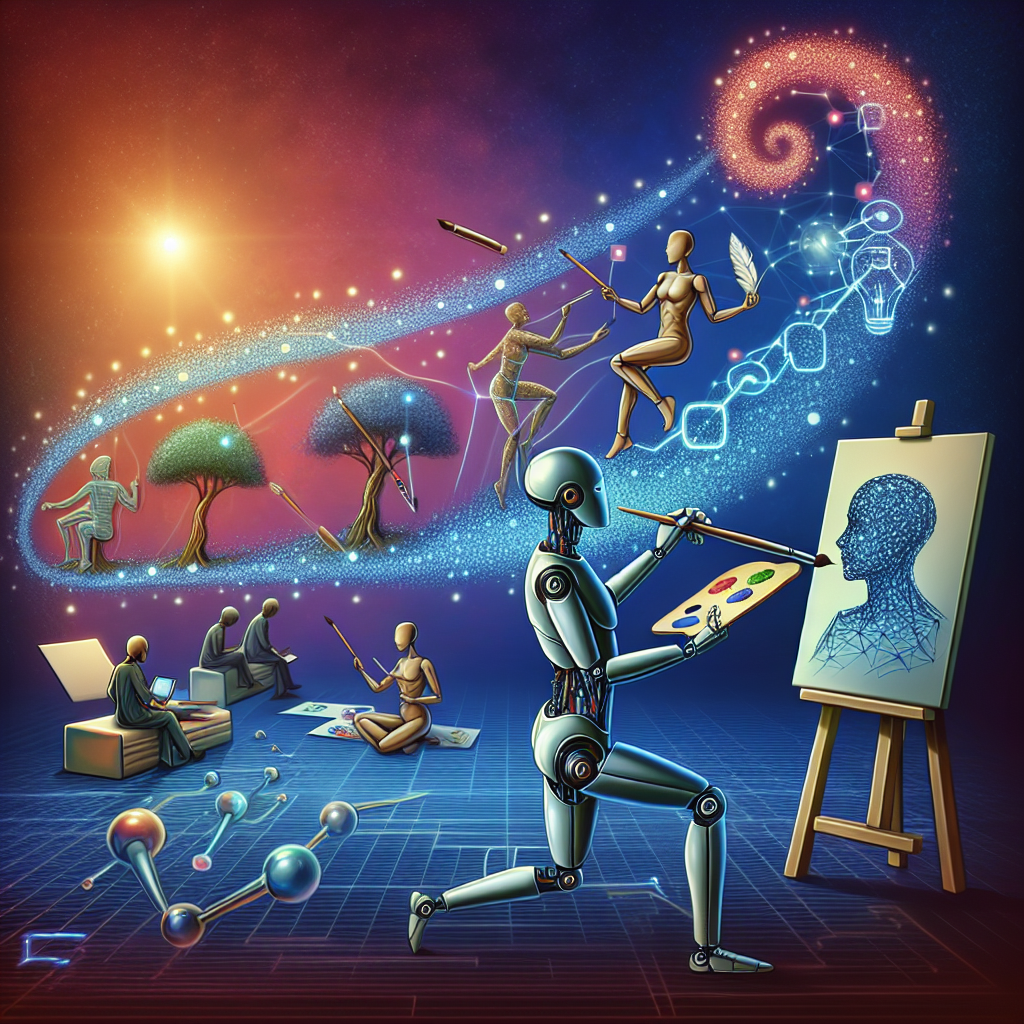Artificial intelligence (AI) is revolutionizing the way we approach creativity in various industries, including music, art, film, and design. With advancements in machine learning algorithms and neural networks, AI is now capable of generating original content, mimicking human creativity, and even collaborating with human creators to produce innovative works of art. This evolution of AI in creative industries is not only changing the way we create and consume art but also challenging traditional notions of what it means to be creative.
AI and Music
One of the most prominent examples of AI in creative industries is in the field of music. AI has been used to compose original pieces of music, generate new melodies, and even remix existing songs. Companies like Amper Music and Jukedeck have developed AI algorithms that can produce royalty-free music for videos, commercials, and other creative projects. These AI-generated music pieces are indistinguishable from those composed by human musicians, leading to questions about the role of AI in the future of music composition.
AI and Art
In the world of visual arts, AI has been used to create stunning pieces of art that challenge the boundaries of human creativity. Artists and designers are using AI algorithms to generate unique patterns, textures, and compositions that would be impossible to create by hand. The use of AI in art has sparked debates about the authenticity of AI-generated artwork and the role of the artist in the creative process. Some argue that AI is simply a tool that enhances human creativity, while others believe that AI has the potential to become a new form of artistic expression in its own right.
AI and Film
AI is also making its mark in the film industry, where it is being used to enhance visual effects, streamline production processes, and even create entire scripts. Companies like ScriptBook have developed AI algorithms that can analyze scripts and predict their box office success, helping filmmakers make more informed decisions about which projects to pursue. AI is also being used to generate realistic CGI characters, animate scenes, and edit footage, making the filmmaking process more efficient and cost-effective.
AI and Design
In the world of design, AI is being used to create innovative products, streamline design workflows, and personalize user experiences. Companies like Adobe and Autodesk have integrated AI algorithms into their design software, allowing designers to generate new ideas, optimize layouts, and automate repetitive tasks. AI is also being used to analyze user data, predict design trends, and customize products to meet the needs of individual users. This fusion of AI and design is transforming the way we approach product development, branding, and user experience design.
FAQs
Q: Can AI truly be creative?
A: While AI can generate original content and mimic human creativity, some argue that true creativity requires a level of emotional intelligence and intentionality that AI lacks. However, as AI continues to evolve and learn from human creators, it has the potential to develop its own form of creativity that is distinct from human creativity.
Q: Will AI replace human artists?
A: AI is unlikely to replace human artists completely, as the human touch and emotional connection that artists bring to their work cannot be replicated by machines. However, AI can augment human creativity, helping artists generate new ideas, explore different styles, and push the boundaries of their art.
Q: How can artists and creators collaborate with AI?
A: Artists and creators can collaborate with AI by using AI tools and algorithms to enhance their creative process. By leveraging AI for tasks like generating ideas, analyzing data, and automating repetitive tasks, artists can focus more on the conceptual and emotional aspects of their work. Collaborating with AI can also inspire artists to experiment with new techniques, styles, and mediums that they may not have considered otherwise.
Q: What are the ethical implications of AI in creative industries?
A: The use of AI in creative industries raises ethical questions about authorship, ownership, and authenticity. As AI becomes more sophisticated and capable of generating original content, it becomes harder to determine who should have the rights to AI-generated works. Additionally, there are concerns about the impact of AI on employment in creative industries, as AI algorithms may replace human workers in certain roles. It is important for artists, creators, and policymakers to consider these ethical implications and develop guidelines for the responsible use of AI in creative industries.
In conclusion, the evolution of AI in creative industries is reshaping the way we approach creativity, innovation, and artistic expression. As AI continues to advance and learn from human creators, it has the potential to revolutionize the way we create and consume art, music, film, and design. While there are challenges and ethical implications associated with the use of AI in creative industries, the collaboration between AI and human creators has the power to inspire new forms of artistic expression and push the boundaries of what is possible in the world of creativity.

